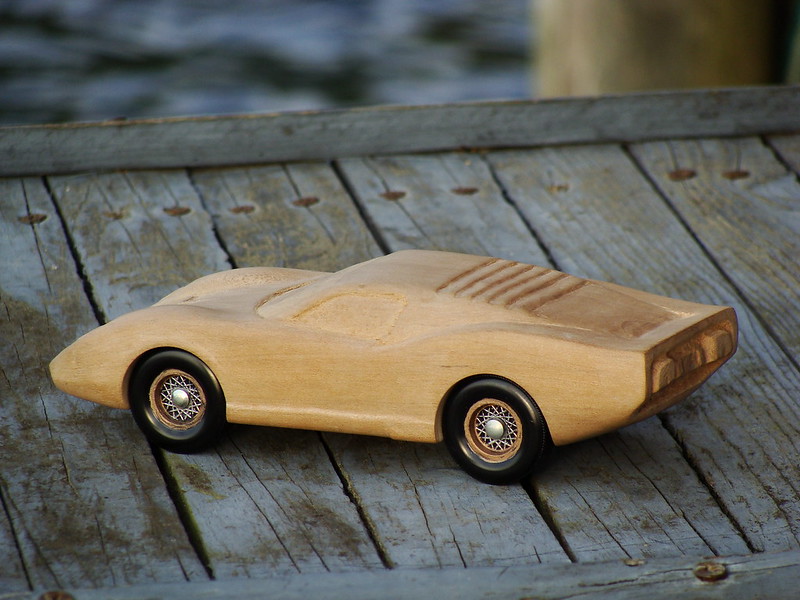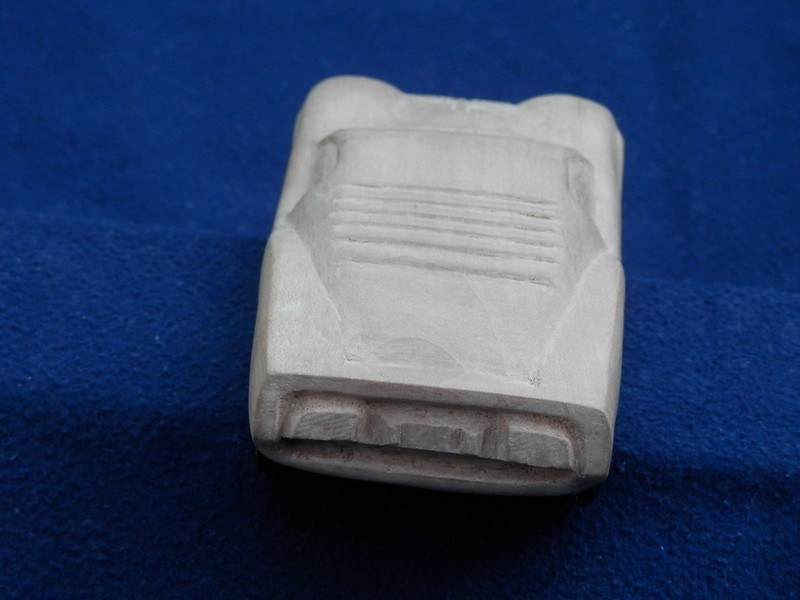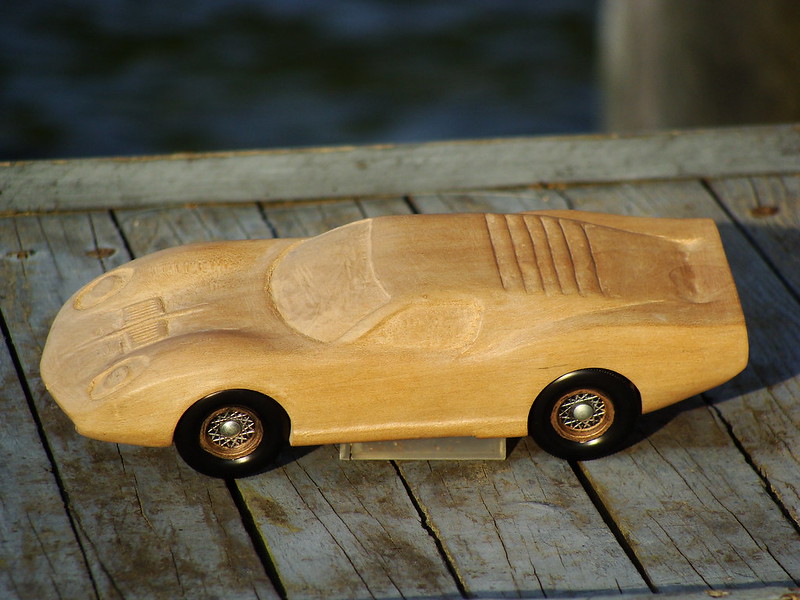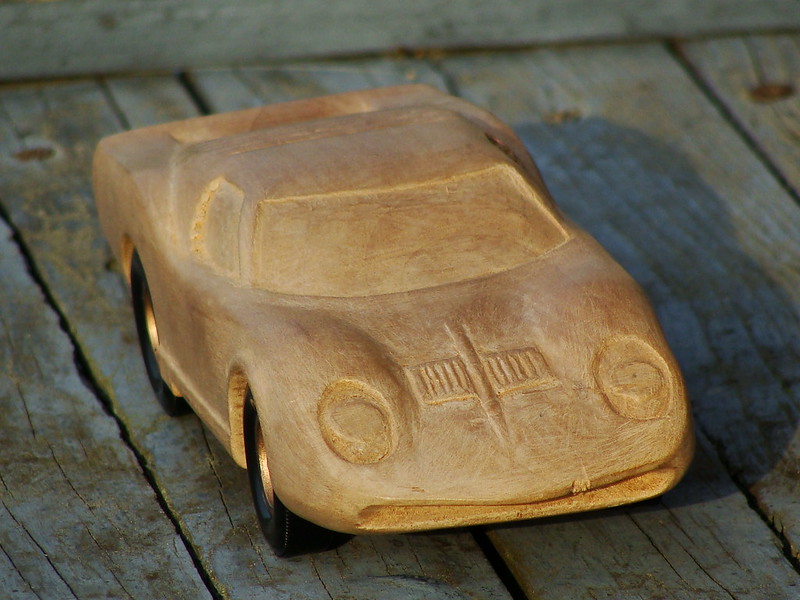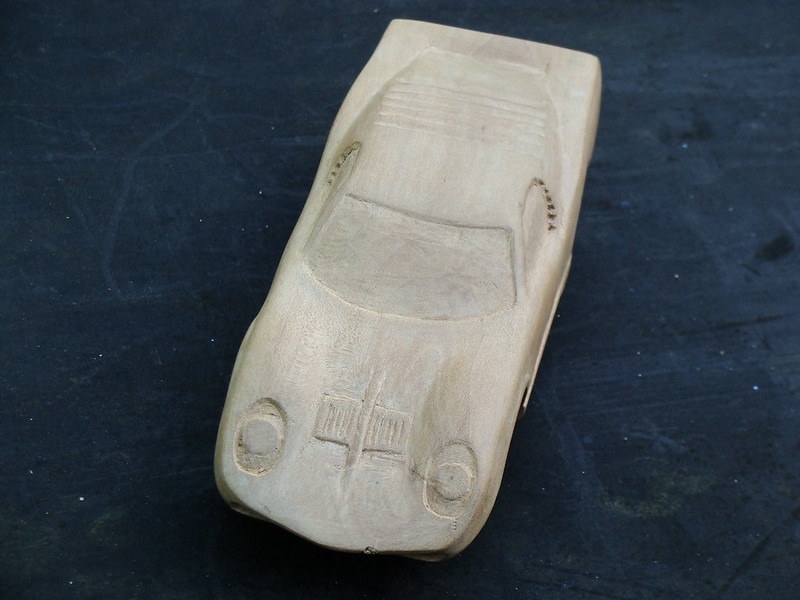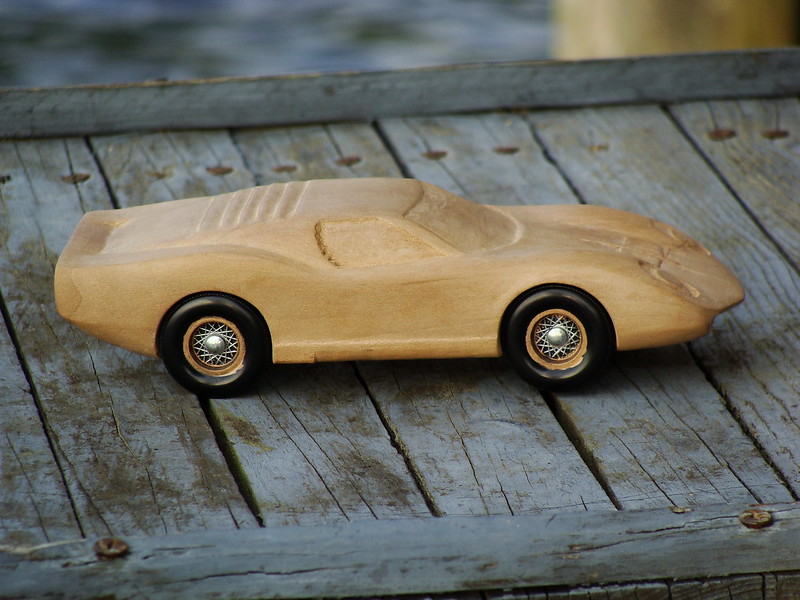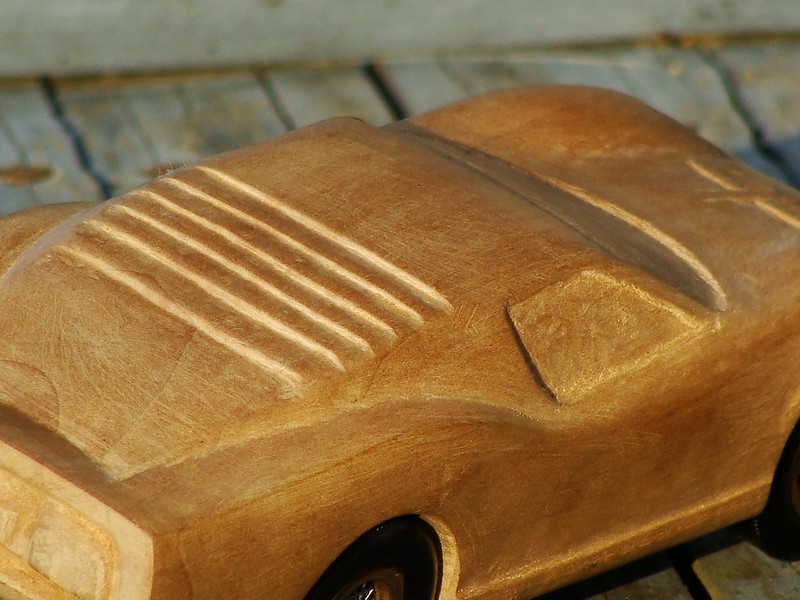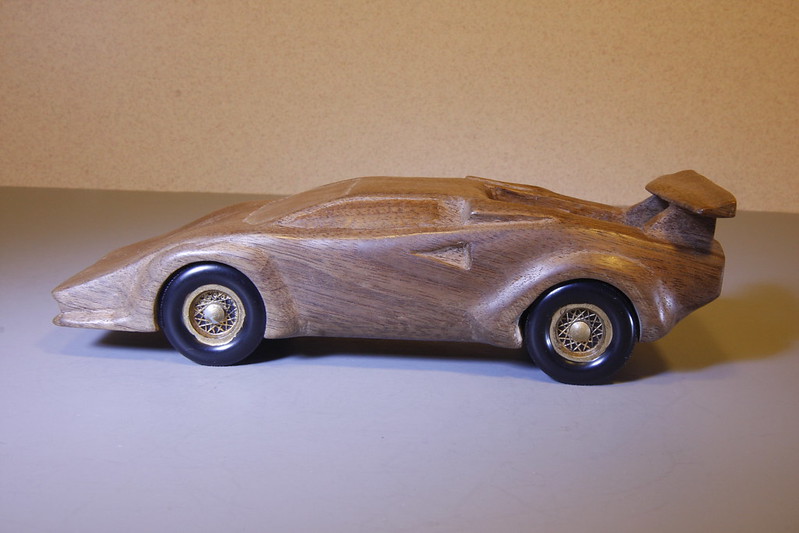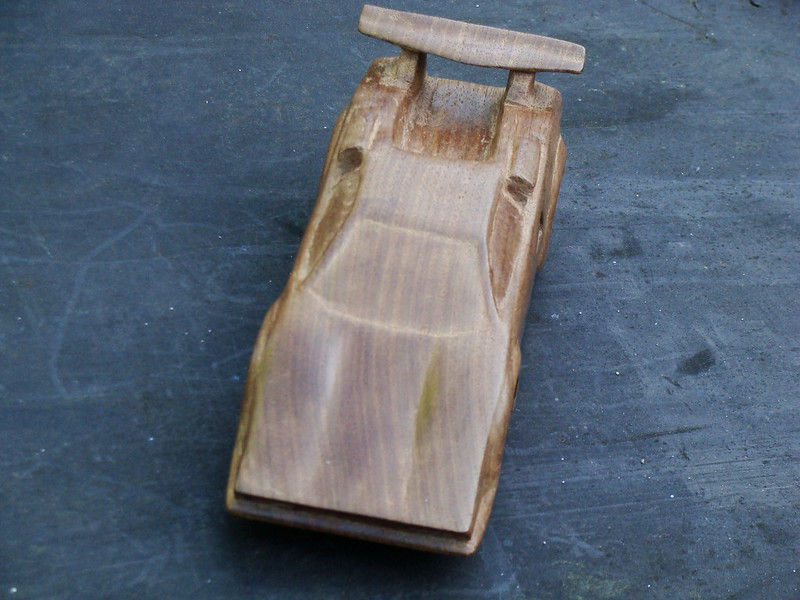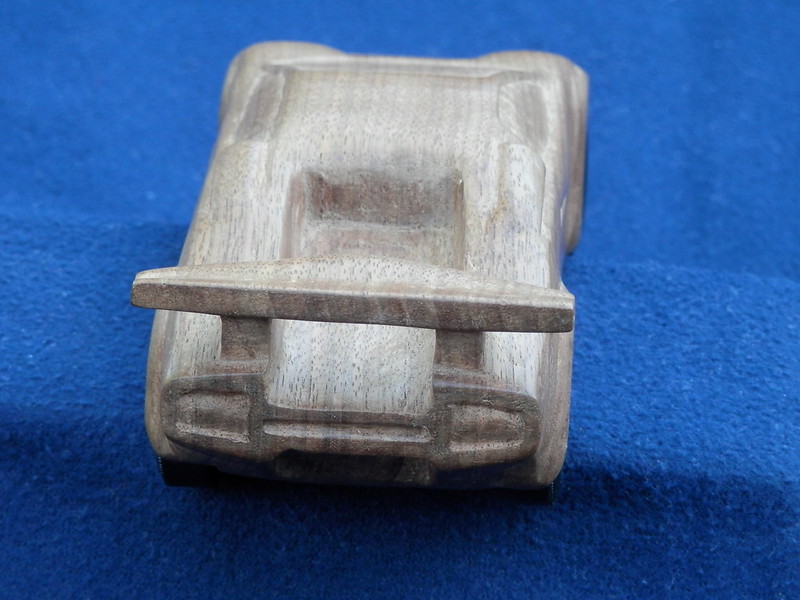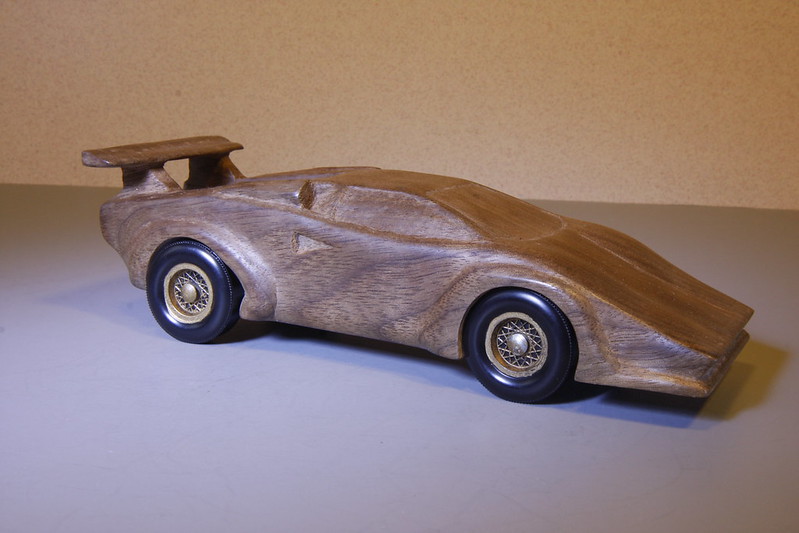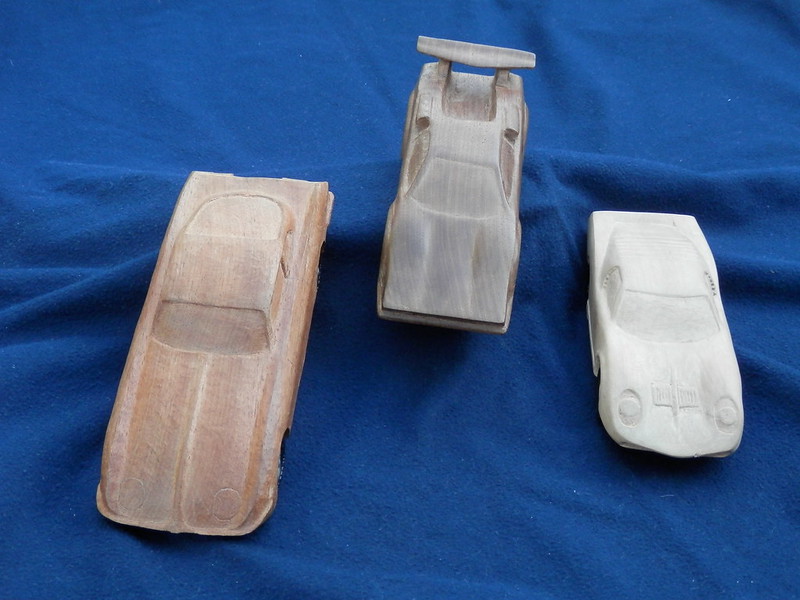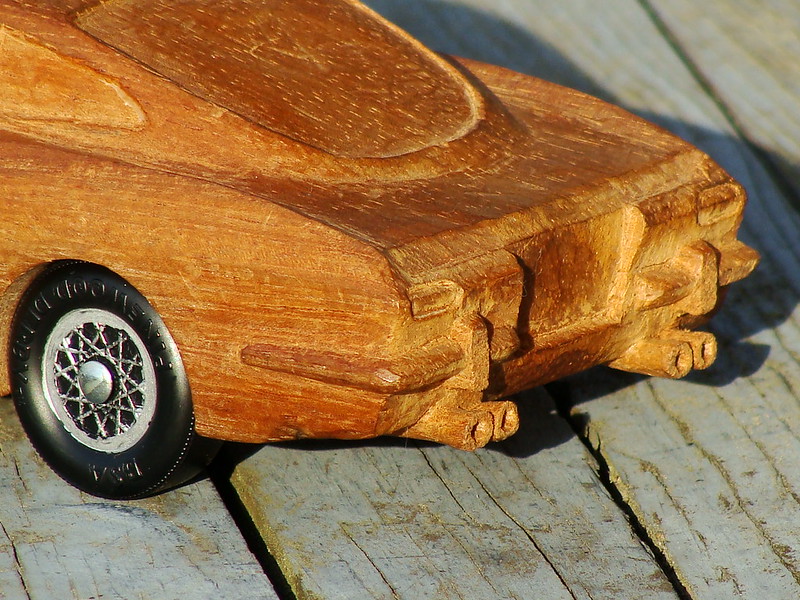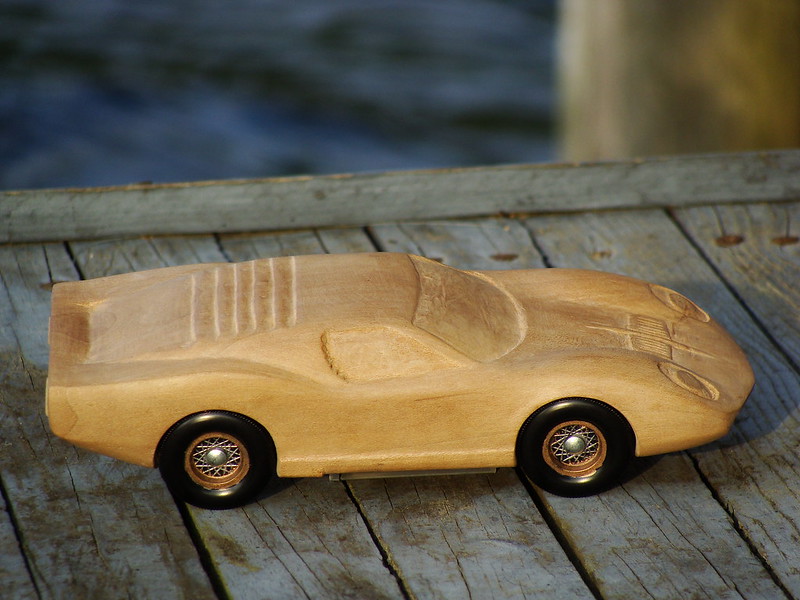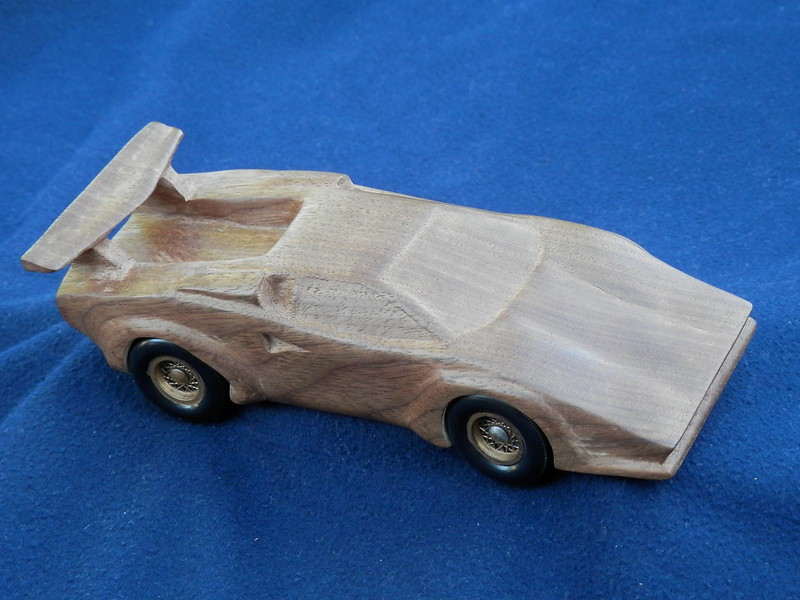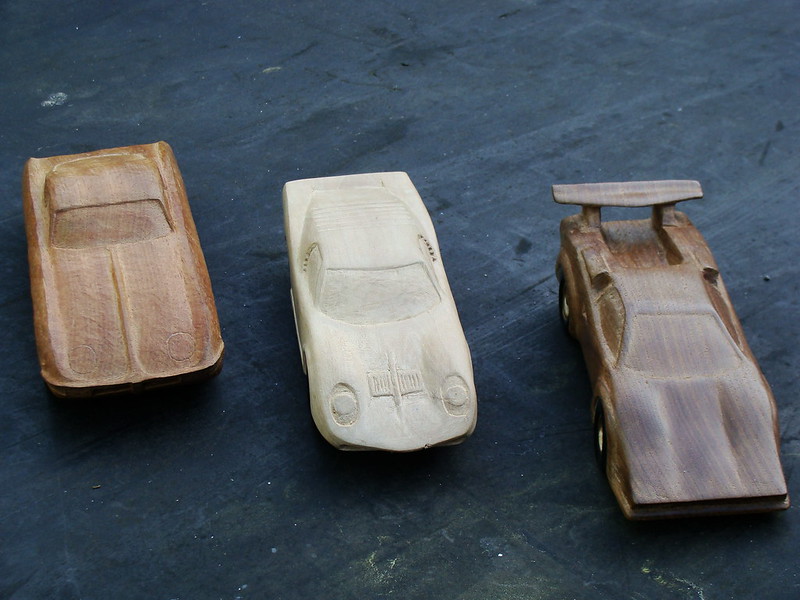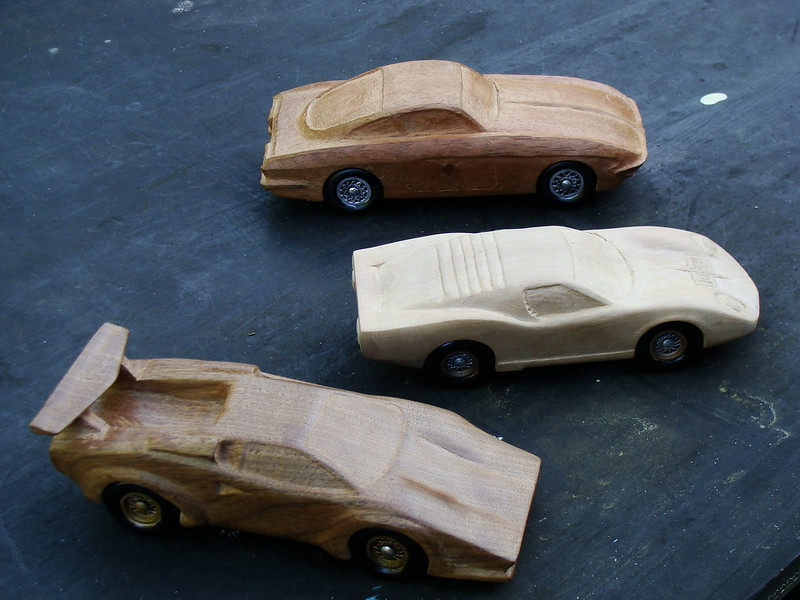THE STUDS/Group 3: Lamborghini’s Lamborghinis

The creator of one of the most influential automobile companies the world has ever seen was born Ferruccio Elio Arturo Lamborghini on April 28th, 1916, in the comune of Renazzo di Cento in the Emilia-Romagna region in northern Italy. His parents were grape farmers, but the young Ferruccio was drawn more to farming machinery than farming itself. Lamborghini studied at the Fratelli Taddia Technical Institute near the town of Bologna. In 1940 Lamborghini was drafted into the Italian Air Force where he served as a mechanic on the Island of Rhodes, becoming the supervisor of the vehicle maintenance unit. Lamborghini was taken prisoner by the British when the island fell at the end of the war in 1945, but Lamborghini did not return home until the next year. Lamborghini soon married when he returned home, but his wife died in 1947 while giving birth to his first son named Antonio.
Lamborghini opened a garage in Pieve di Centro after the war. He modified an old Fiat Topolino he had purchased and entered the 1948 Mille Miglia. Lamborghini’s race ended after approximately 600 miles into the race when car number 427 entered a bar through a wall in the town of Fiano, in Turin; and Lamborghini lost his enthusiasm for racing after this incident.
Lamborghini began to build tractors at his garage from leftover military equipment and founded Lamborghini Trattori in 1948. It is said that he got the idea on his honeymoon. The tractors had 2, 3, and 4 cylinder engines and featured modular construction with many interchangeable parts. A direct injection engine was added in 1954. The tractor company became very successful and was one of the principal agricultural equipment manufacturers by the mid 1950’s with an output of 400 units a month.
Lamborghini started an air conditioning and heating company for both private and industrial applications named Bruciatori SpA., following a visit to the United States. This company was successful and allowed Lamborghini to pursue his childhood dream of making helicopters, but the government refused to grant him the necessary approval so his dream never materialized.
The success of Lamborghini Trattori brought Lamborghini wealth and allowed him to pursue his growing interest in automobiles. Lamborghini began to purchase faster and more expensive luxury cars including Alfa Romeo’s, Lancia’s, a Jaguar E-Type, and a Mercedes Benz 300 SL, along with his two Maserati 3500 GT’s. Adolfo Orsi owned Maserati at the time and Lamborghini stated “Adolfo Orsi was a man I had a lot of respect for: he had started life as a poor boy like myself. But I do not like his cars much. They felt heavy and did not really go very fast”.
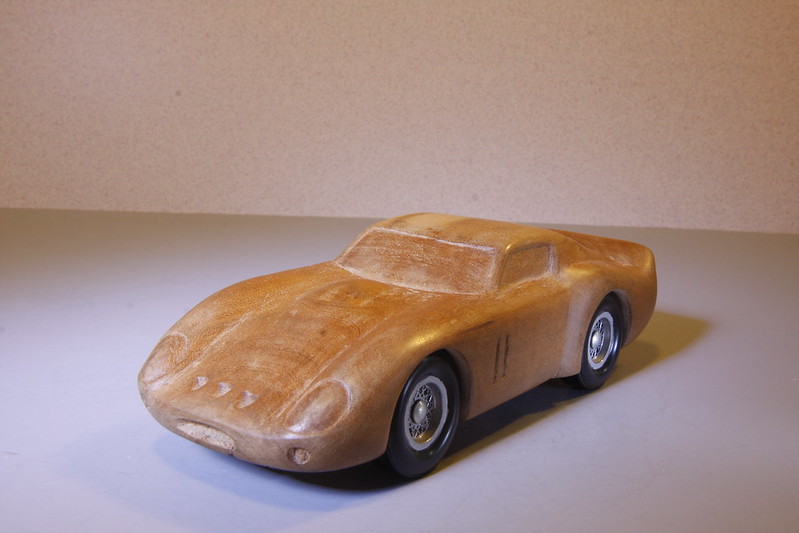
In 1958 Lamborghini traveled to Maranello to buy a Ferrari 250 GT, with a body designed by the coach builder Pininfarina. Lamborghini owned several Ferrari’s over the years stating that he thought the cars were good, but too noisy and rough to be proper road cars; categorizing them as repurposed track cars with poorly built interiors. Lamborghini found that the Ferrari clutches were inferior and they required constant rebuilding back at the factory in Maranello. Lamborghini was also annoyed that the technicians would take the car for several hours to perform the work in secret. Lamborghini expressed his dissatisfaction with the substandard after sales service and brought his complaints to the attention of Enzo Ferrari and requested a meeting. However, Ferrari refused to meet with Lamborghini stating that he was simply a little tractor maker and knew nothing about sports cars. Lamborghini took his car back to his shop for his own engineers to take the car apart and Lamborghini learned that the car had been constructed with many standard parts. He decided to modify his personal Ferrari 250 GTO to repair the problems that Ferrari had refused to fix.
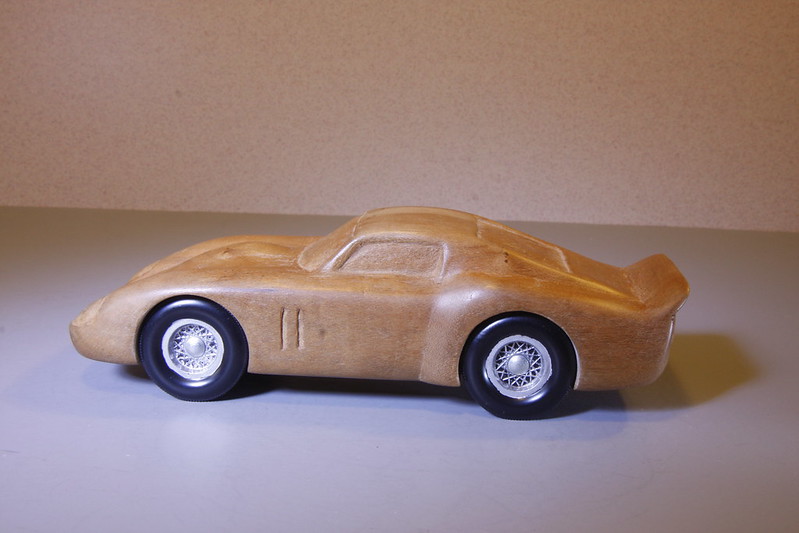
First Lamborghini installed a bigger clutch made by Borg and Beck. Next Lamborghini replaced the Ferrari’s cylinder head which had a single-overhead cam with 12 rockers, and replaced them with double overhead cams heads of his own design. Next he fitted 6 horizontally mounted carburetors; something he would do 2 years later on the 350GT. Lamborghini was pleased the results of his modifications, so he waited for the test drivers from Ferrari to go by on the superhighway near Modena. The test drivers had “ProvaMo” on their license plates. Lamborghini raced the cars from Maranello and he learned that his modifications allowed the car to run 25 kph faster than the stock cars, which Lamborghini knew was a result from his modifications. When they stopped, these test drivers asked him what he had done to his car; Lamborghini gave them a smile and said “Oh, I don’t know”. Ferrari never spoke to Lamborghini after the incident. Lamborghini acknowledges modestly and respectfully that “Ferrari was a great man, but it was just too easy to upset him”.
Lamborghini had the desire to create the perfect touring car that offered high performance without compromising ride quality or the quality of the interior. Lamborghini wanted a luxurious and powerful GT car that could run 150 mph on the highway and not an expensive racing car, but a car that benefited from racing technology. Later Lamborghini told an Italian reporter, “I am the first Japanese in Italian history: I never invented anything but I always copied the best. To make my motor I asked, which is best? The response was the 12 cylinder Ferrari. However, to improve it I needed to change the head, so I asked which heads are the most efficient? The answer: the twin cams on the 4-clyinder Alfa Romeo. So it was enough for me to put together these concepts to make the most beautiful motor in the world”.
Lamborghini was a clever business man and recognized that he could make a triple profit on the components used in his tractors if he used them in an exotic car.
Lamborghini was a man of simple tastes and he never read, not even newspapers. He did not believe in hard work and would only visit the office between 10 AM and 1 PM. Lamborghini relied on a well paid staff of experts and he did not spend much time pushing papers around on a desk, but worked motivating his employees and working on the cars beside his engineers. Lamborghini had a gift at assembling great teams of people and that is what contributed to his success.
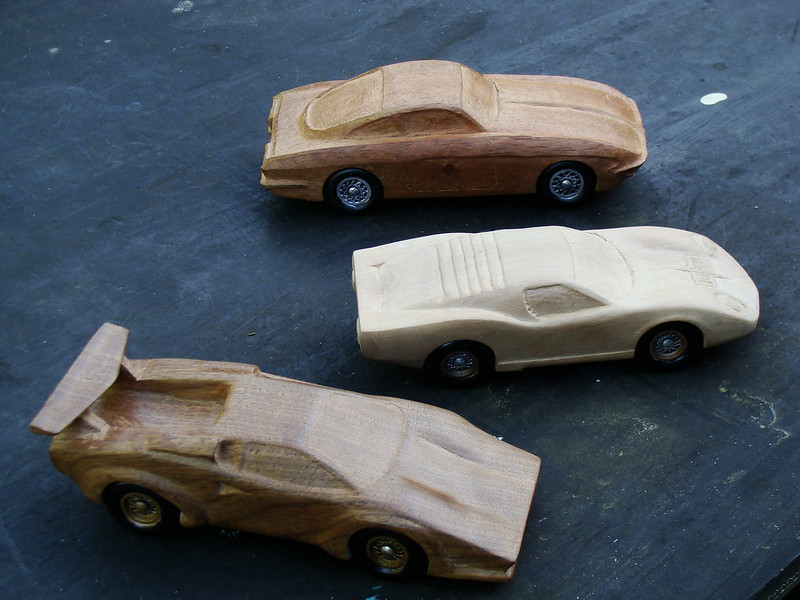
Lamborghini established his automobile company in May of 1963 with $1,500,000 of his own money and named it Automobili Ferruccio Lamborghini SpA. He built a new factory in the area of Sant’Agata Bolognese, which is located in northern Italy. The location was a small town between Modena and Bologna with plenty of space to grow and near both the tractor and heating company. This location is in the area called Terra di Morori, and is known for making engines in the region where Ferrari, Maserati, and Ducati were located. The highly skilled labor in the region was not paid well because of the depressed conditions in the area. Lamborghini had guaranteed employment to the workers in exchange for tax-free loans to build his factory. The city’s communist party promised the company a 19% interest rate on all bankable finances with zero tax on all profits in return for Lamborghini allowing their factory employees to become union members. Lamborghini was impatient and exerted pressure to complete the factory in a year’s time once construction had begun and he gambled on the cars he was going to make. Lamborghini had a taste for the best things that life had to offer and he set those lofty goals for his automobile company as well.
Lamborghini had included in the by laws of the company a ban on racing establishing that the purpose of every car completed at the factory was a sports car for street use. Lamborghini alluded to the fact that he had a 16 year-old son and he was not keen to see him become involved in racing, but the business man knew that without proper sponsorship that racing was a fast track to bankruptcy and Lamborghini wished to see his company endure over time.
The factory was a highly functional structure and was considered the best in its field at the time. The large central building was filled with light and located adjacent to the office building where supervisors could constantly monitor the production process. This was ideal for Lamborghini because he was known to roll up his sleeves and go down to the production line and work on a car if something was done that he did not agree with.
Lamborghini had visited the Seville Ranch of Don Eduardo Miura who was a renowned breeder of Spanish fighting bulls. Lamborghini was born under the zodiac sign of Taurus the bull, which represented characteristics of energetic forward thinking and impetuous character which he loved; so he chose the aggressive raging bull symbol for the corporate coat of arms.
Lamborghini built the first model quickly because of the time spent buying and building his factory. Lamborghini set the time for the official presentation of the models unveiling to be in November of 1963 at the Turin Automobile Show.
Lamborghini had commissioned the engineering firm of Societá Autostaŕ to design a V-12 engine that had a 3-Litre displacement similar to Ferrari’s for use in his cars. However, Lamborghini wanted the engine to be designed for road use in contrast to the Ferrari’s racing engines. The man who led Autostaŕ was Giotto Bizzarrini who one of the “Gang of Five” Ferrari engineers responsible for creating the Ferrari 250 GTO; but left the company after Enzo Ferrari announced his intentions to reorganize the staff. Bizzarrini designed a 3.5 Litre engine with a dry-sump oiling system and a maximum output of 360 bhp at 9800 rpm’s, which had the characteristics of racing engine which Lamborghini specifically said he did not to make. Bizzarrini refused to change the engine’s design to make it more ‘well mannered’. As a result, Lamborghini refused to pay the 4.5 million lire until ordered to do so by the courts.
The first Lamborghini chassis design was created by Gian Paolo Dallara who had worked for both Ferrari and Maserati. Dallara was part of a team of young engineers that included Paolo Stanzani, a recent college graduate; and Bob Wallace, who was a New Zealander known at Maserati for his developmental skills concerning chassis handling and feedback. The body was styled by Franco Scaglione who was a relatively unknown designer at the time. Despite all of the hard work by these engineers to produce the car quickly to meet the deadline to enter the car in the show, Lamborghini was dissatisfied with several design features of the 350GTV and with the state of tune of the engine. He commissioned Carrozzeria Touring to redesign the car to be more practical and to detune the 3.5 Litre V12 engine to 270 bhp. The new body and retuned engine resulted in the first production 350GT.
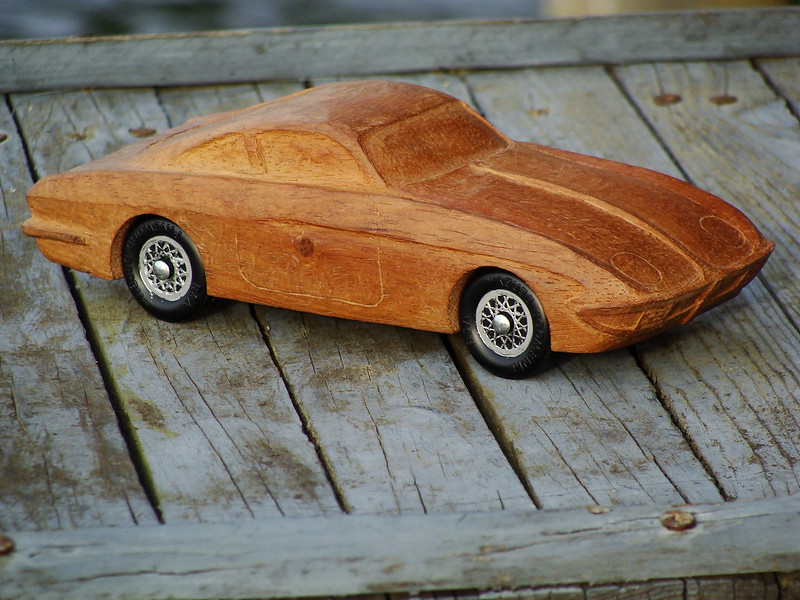
Lamborghini allowed work to continue on the GTV as a show-only prototype. As the car was assembled, the workers discovered that the body panels would not fit around the engine. Another problem was that the motor was not ready in time for the show because of the ongoing disagreement with the engine designer Bizzarrini. Lamborghini had no plans for the car beyond the auto show, so he had the engine bay filled with bricks to make the car sit at the correct height and he kept the hood shut through out the show. The incomplete show car also lacked brake calipers, foot pedals and windshield wipers. The original Bizzarrini engine was shown along side of the car complete with its Weber down draught carburetors and rear distributor. Lamborghini designed and built the 350GTV in only four months time for the unveiling at the 1963 Turin Motor Show. Despite all of the show cars shortcomings, the press gave the car a warm reception.
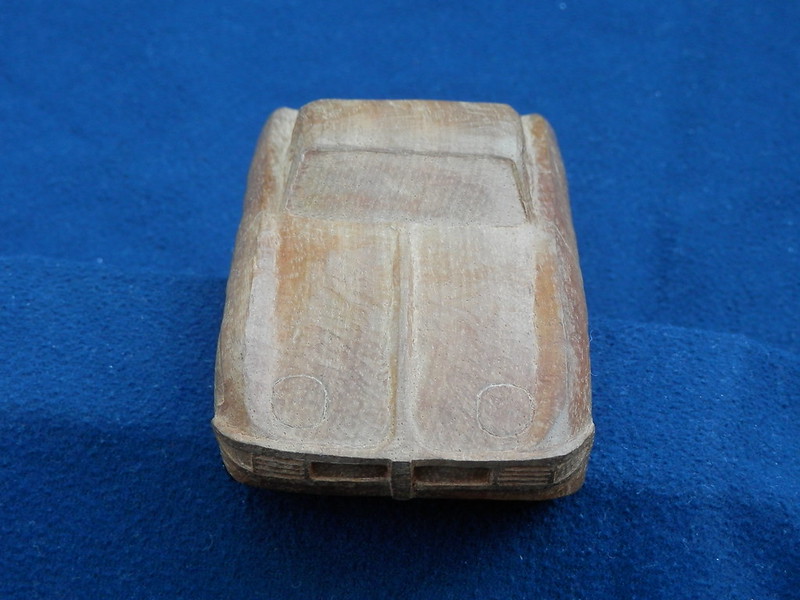
The restyled 350GT with the detuned Bizzarrini engine was debuted at the 1964 Geneva Motor Show and it also garnered positive reviews from the press. Production began shortly after the show and Lamborghini built 13 cars by the years end, selling each car at a loss to keep his prices competitive with Ferrari’s. The 350GT was produced for two years and a total of 120 cars were sold.
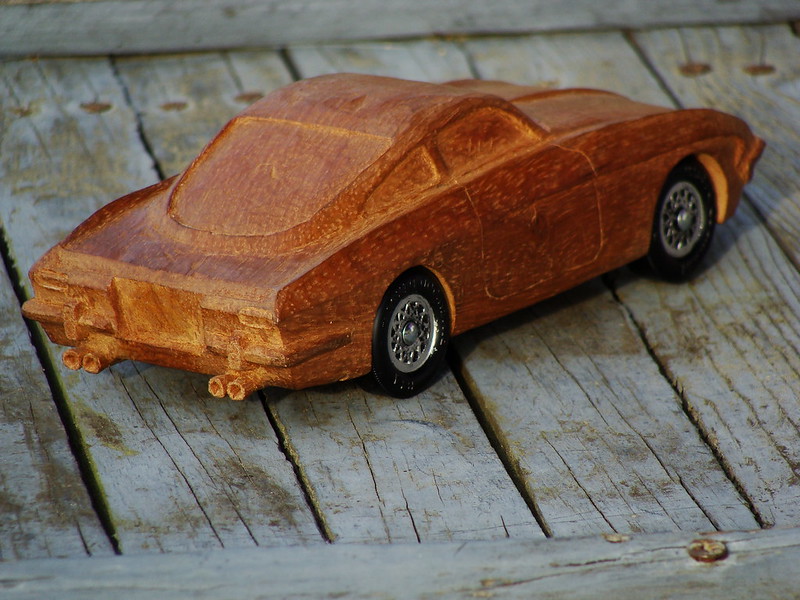
Gian Paolo Dallara made improvements to Bizzarrini’s V-12 increasing the displacement to 3.9 Litres and increasing the power output. The engine was installed in a 350GT creating the new 400GT in 1965. The 400GT 2+2 was introduced at the Geneva Auto Show in 1966, which was a stretched version of the original with minor upgrades. The car was well received by both the press and the public. The increased revenue from the 400GT 2+2 sales allowed Lamborghini to increase his labor force and offer more services to its customers.

In 1965 three of Lamborghini’s top engineers; Dallara, Stanzani and Wallace, began to invest their personal time into the development of road car they hoped they could build that would be for enthusiasts and that could also be raced on the track. The engineers worked at night and hoped to sway Lamborghini’s thinking that the car would distract from the companies focus or become too expensive. Lamborghini approved of the P400 project and allowed the development to continue, thinking that the car would be a potential marketing tool and never sell more than 50 cars.
The P400 chassis featured a transversely mounted mid-engine layout which was a complete change from existing Lamborghini cars. The 4-Litre V-12 engine from the 400GT was effectively merged with the transmission and differential put together with the engine base as a single casting, reflecting the lack of space in the design. The lightweight chassis was nothing more than drilled, bent and welded sheet metal. The car’s rolling chassis featuring the unusual engine layout was displayed at the Turin Salon in 1965. The unique rolling chassis impressed the attendees of the show so much that orders were placed despite the lack of a car body. One of the visitors of the show was Nuccio Bertone who was impressed by the chassis design he saw. Bertone approached Lamborghini and told him “I am the one who can make the shoe to fit your foot”.
The body work was styled by Bertone with the help of young designer named Marcello Gandini, who worked for Gruppo Bertone. Gandini was a young inexperienced designer at the time he designed the Miura and did not worry about practicality or the ergonomics of automotive design. Gandini had to interpret Bertone’s ideas and he created a dramatic body to compliment the unique chassis, with the result being the Miura prototype.
The engineers worked seven days a week and around the clock to complete the car in four months. The body was finished just days before the 1966 Geneva Motor Show, however, none of the engineers had checked to see if the engine would fit in the tight engine compartment on the car. Lamborghini was committed to displaying the car, so in a similar fashion to the debut of the 350GTV, the engine bay was filled with ballast and the rolling chassis was displayed along side. The leading salesman named Sgarzi was forced to turn away the press who wanted to see the engine inside. Despite all of the setbacks, the car was the highlight of the show and Lamborghini announced the car would be in production in 1967 under the name Miura, and the car immediately made the stylist Marcello Gandini a star designer. The Miura’s layout and styling became the standard of mid-engine two seat high performance sports cars into the next century. Don Eduardo Miura was said to have been ‘filled with pride’ when Lamborghini had named the new car for his family and their line of fighting bulls.
The Miura positioned Lamborghini as a leader in the world of supercars while the 400GT was the sophisticated road car that Lamborghini had envisioned and had long desired to build. The company had expanded by 1966 and enough prospective buyers had made deposits to begin the final development of the Miura. The first four cars produced were kept at the factory where Bob Wallace continued to refine the design and 108 cars were delivered by December. The Miura increased Lamborghini’s reputation as the premier supercar producer in the world and its financial fortune; however, the car laid the seeds of the company’s demise.
Gian Paolo Dallara became frustrated with Lamborghini’s refusal to participate in motorsports so he left the company to head the Formula One program at De Tomaso, which one of Lamborghini’s rivals. Lamborghini could have financed a racing team but he remained against it. Lamborghini said that “I know people all over the world who would have paid a kings ransom for a racing version of the car, but I refuse to build one.” Lamborghini was even against the construction of prototypes stating his mission: “I wish to build GT cars without defects-quite normal, conventional but perfect-not a technical bomb”. Paulo Stanzani replaced Gian Paolo Dallara as the technical director.
The 400GT was now a four-year-old design and Lamborghini began searching for a replacement. The coach builder Touring had designed the 350GT and the 400GT, so Lamborghini asked them to replace the design but use the same chassis. Touring created the 400 GT Flying Star II, but Lamborghini did not approve the design and Touring closed later that year due to financial difficulties. Instead Lamborghini turned to the coach builder Neri and Bonacini in Modena who produced the 400GT Monza, but that design was rejected as well. Lamborghini turned to Bertone designer Mario Marazzi, who worked at Touring before its demise, and Marazzi worked with Lamborghini’s engineers to produce the Marzal.
The Marzal was designed on a stretched Miura chassis and was powered by an in-line 6-cylinder engine that was made from half of the Miura’s V-12 design engine. The design features gull-wing doors and enormous glass windows and a louvered rear window, but this design was rejected as well. The car was redesigned and became the Islero 400GT. Lamborghini thought the car represented a well-developed Gran Tourismo product even though it was not the four-seater car he desired. However, the Islero 400GT failed to attract buyers and after a two year run was discontinued after only 125 cars were sold.
A new version of the Miura was introduced in 1968 that featured more power and a stiffer chassis. The Miura P400 Roadster was introduced at the 1968 Brussels Auto Show. Gandini was now the head of design at Bertone and he paid special attention to the details of wind buffeting and noise insulation, which were problems inherent to a roadster. However, Ubaldo Sgarzi the sales manager for Lamborghini was forced to turn potential buyers away because Lamborghini and Bertone could not decide on the size of a production run for the roadster. The Miura Spider prototype was sold to an American metal alloy supplier who wanted the car as a marketing device. Despite the problems with the Islero 400GT and the Miura Roadster, Lamborghini’s automotive business was doing well delivering 353 cars that year.
Lamborghini encountered work stoppages from the unionized workforce in 1969 as part of a national campaign due to strained relations between the metal workers union and Italian industry. University attendance was growing at a phenomenal rate in the 50’s and 60’s, and the workers from the universities brought their radical ideas to the factory floors to demand better working conditions and time off. A series of strikes in 1968 that were initially confined to the peripheral area of the country where union influence was minimal erupted in the northern factories. Strikes soon broke out in the cities and hundreds of thousands of workers were involved. The large influx of southern migrants to the north during the 50’s and early 60’s who ended up on the shop floors had a destabilizing effect on these factories. Union representatives were generally uninterested in complaints from unskilled workers and skilled workers who were unaffected by the changes and ignored younger workers needs. This created a situation where young workers thought the only way to solve their problems was through activities independent of the unions. Workers began to experiment with new forms of struggle which was sign that revolutionary groups began to have influence in the factories. Strikes began in mid autumn of 1968 and ran into the 1970’s. Lamborghini was able to work along side of his union employees on the factory floor and motivated his staff to continue working despite these disruptions.
During this time, Bertone persuaded Lamborghini to design a new four-seater designed by Marcello Gandini. The body shell was sent to Lamborghini for inspection, however, Lamborghini was once again not pleased with the vehicle which featured gull-wing doors and insisted the car have conventional doors. The car was redesigned and the result was the Espada which debuted at the 1969 Geneva Auto Show. The Espada was powered by a front mounted 3.9 Litre V-12 factory engine, and named for the Spanish word for sword, which refers to the bullfighter. The Espada turned out to be a success with 1217 cars produced over a ten year period.
The Islero was in the works as a replacement with a higher performance version of the Espada named the Jarama 400GT with increased compression on the 3.9 Litre engine. The Jarama 400GT was unveiled at the 1970 Geneva Auto Show but Paulo Stanzani was already working on a new car that would use none of their existing parts. Lamborghini was following Porsche and Ferrari by producing a smaller V8 powered 2+2 car due to the changes in the tax laws. The Urraco was Lamborghini’s practical vehicle and it was designed for owners with children. The single overhead cam V8 engine was designed by Stanzani, and Bob Wallace began road testing and development of the car immediately for a debut at the 1970 Turin Motor Show.
Lamborghini began to develop the replacement for the Miura in 1970 in an attempt to reduce the interior noise levels which Lamborghini found unacceptable and not conforming to his brand philosophy. Engineers designed a longer chassis and placed the engine longitudinally and further away from driver’s seat. The body was styled at Bertone by Marcello Gandini, the designer of the Miura.
The new car was designated the LP 500; named for the 4.97-Litre V12 engine. The design’s angular wedge-shaped body was wide, low, and made of flat trapezoidal panels and was simply stunning. The prototype was painted bright yellow and debuted at the 1971 Geneva Auto Show. The response to the car was great and the new Lamborghini LP500 was the star of the show. However, the prototype needed extensive modifications before production could begin. The small air intakes on the cars rear fenders could not cool the engine and the larger “air box” scoops had to be added.
The aluminum honeycomb sheeting used to construct the body was changed for production. After the car was shown, the car was sacrificed in a crash test at Motor Industry Research Association (or MIRA) facility to gain European approval even though the construction methods used to build the car were unlike any other production vehicle.
Lamborghini’s companies began to run into financial difficulties in 1971. The tractor company exported half it’s production and the South African importer named Centro, cancelled all of its orders. At the same time a successful coup ď état in Bolivia cancelled a large order that was ready to ship. Trattori’s employees were unionized and could not be laid-off and Lamborghini was forced to sell the company in 1972 to another tractor builder named SAME.
The entire Lamborghini group was now finding itself in financial troubles. Lamborghini began to court buyers for the Automobili and development at the automaker slowed. Bertone had tried to get Lamborghini to produce more chassis for the Miura SV however Lamborghini felt that no one would want the Miura since the Countach had been introduced and he declined the offers. This turned out to be another bad decision on Lamborghini’s part because the company could have easily sold another 50 to 100 Miura’s between 1972 and 1974. The production version of the LP 500 was not shown at the 1972 Geneva Auto Show, and faced with the need to cut costs, Paulo Stanzani set aside the LP 500’s engine and began developing the smaller 4-Litre engine for production.
Lamborghini negotiated with his friend Georges-Henri Rossetti, a wealthy Swiss businessman who owned an Espada and an Islero, to buy 51% of the company for US$600,000. Lamborghini relinquished control of the company he founded but continued to work at the Sanť Agata factory. Even though Rossetti owned the controlling interest in the company, he rarely became involved in Automobili’s affairs.
An international oil crisis in 1973 caused the sales of all high performance cars to crash as customers sought small and practical fuel efficient cars to combat rising fuel prices and governments mandated new fuel economy laws which affected the world economy. Lamborghini exotic sports cars were all utilizing high powered engines with high fuel consumption and sales suffered causing the company more financial problems. The car introduced in 1971 as the LP500 entered production in 1974 as the Countach LP400 powered by the smaller 4 Litre V12 engine. The Urraco P300 was reworked and named the Silhouette featuring a Targa top and a 3-Litre V8. The car had poor quality workmanship, reliability, and ergonomics combined with the fact that the car could only be imported to the United States through the ‘grey market’. As a result, only 54 cars were sold. A lack of presence in the American market affected Countach sales as well.
Lamborghini became disenchanted with the car company that bore his name in 1974 and he sold his remaining 49% stake in the company to René Leimer who was a friend of Georges-Henri Rossetti. Lamborghini exited the industrial world and retired to a 740-acre estate known as “La Fiorita on the shores of Lake Trasimeno in Castigione del Lago, in the Umbria region of central Italy. Lamborghini returned to his farming roots and began to produce wines and is said to have enjoyed hunting in his final days. Lamborghini designed several golf courses in his retirement and continued to manage his other business interests. Lamborghini died after suffering a heart attack on February 20th, 1993, and is buried at the Monumental Cemetery of the Certosa di Bologna monastery.
Lamborghini built his automobile company out of spite because of the difficulties endured while trying to get his unreliable expensive sports car repaired and retired leaving a company that had changed the world. Lamborghini’s cars made an immediate impact with his first 350GT, which was similar to the other automotive products on the road at that time offered by established marquees such as Ferrari and Jaguar.
The 350GT was the realization of Lamborghini’s dream: to make a fast, stylish, comfortable and reliable GT car which was a quality that other GT cars producers had lacked. Lamborghini focused on his mission of producing a perfect GT car without defects or technical problems through out his time at the helm of the company; but these were not the visions that changed automotive history. Lamborghini was gifted to have been able to secure an innovative engineering staff that left Ferrari after a reorganization, bringing with them new ideas and Lamborghini had the financing to allow these engineers to follow their dreams. Their efforts produced the Miura, despite Lamborghini’s resistance to the radical ideas used to produce the car.
Conflicts between the owner and the engineers began with the 350GTV prototype and the disagreements caused the first engine designer to quit. Lamborghini’s engineers had to work at night on their own time to produce the car that would change the world because Lamborghini was set against producing any form of a race car. Lamborghini allowed the Miura project to advance because he had ideas to use it as a marketing tool, not the innovative production car it turned out to be. The Miura’s mid-engine design was not the first time engineers had created a mid-engine car, but it was the first production car with the design that mounted the V12 engine transversely behind the driver improving the handling while creating a car whose performance was unmatched for a time. The Miura could travel 0 to 60 mph in the low six-second range and with a top speed of 170 mph, which made the Miura was the fastest car in the world at that time. Lamborghini had created the first supercar and begun the competition between the great storied marquee with an engine-chassis design is still used in supercars and GT cars today.
Few people get a second chance to shock the planet, but Lamborghini managed another spectacular creation in the form of the Countach. Designed by the same man who had created the Miura, the Countach with its flat, wedge-shaped design combined with scissor doors and NACA ducts created the image of the future. Lamborghini had been satisfied with the Miura and gave Gandini full freedom to design without limitation while emphasizing great styling and performance over practicality and cost. Gandini’s cab-forward design was needed to make room for the large 5-Litre engine so the car could obtain the desired top speed of 200 mph. The aluminum body panels over a tubular space frame made the car light and stiff. The motor was mounted in a north-south fashion and the transmission was mounted in the front to provide better cooling to the engine and improve the balance of the car and the handling characteristics. The Countach never earned any design awards but the car’s exotic shape is one of the most memorable in automotive history.
The Countach established the criteria for a supercar with its mid-engine design, powerful V12 engine, and an aluminum body with a tubular space frame and exotic styling, which would define a supercar for years to come.
Between 1974 and 1987, the Lamborghini Countach was considered the number 1 supercar in the world and no supercar would hold the title as long. Lamborghini sold the company before the impact of the Countach on automotive history was known. Although the company went on to create more memorable cars with its new owners, none of the newly designed machines had the impact on history that Lamborghini’s Lamborghinis had.

